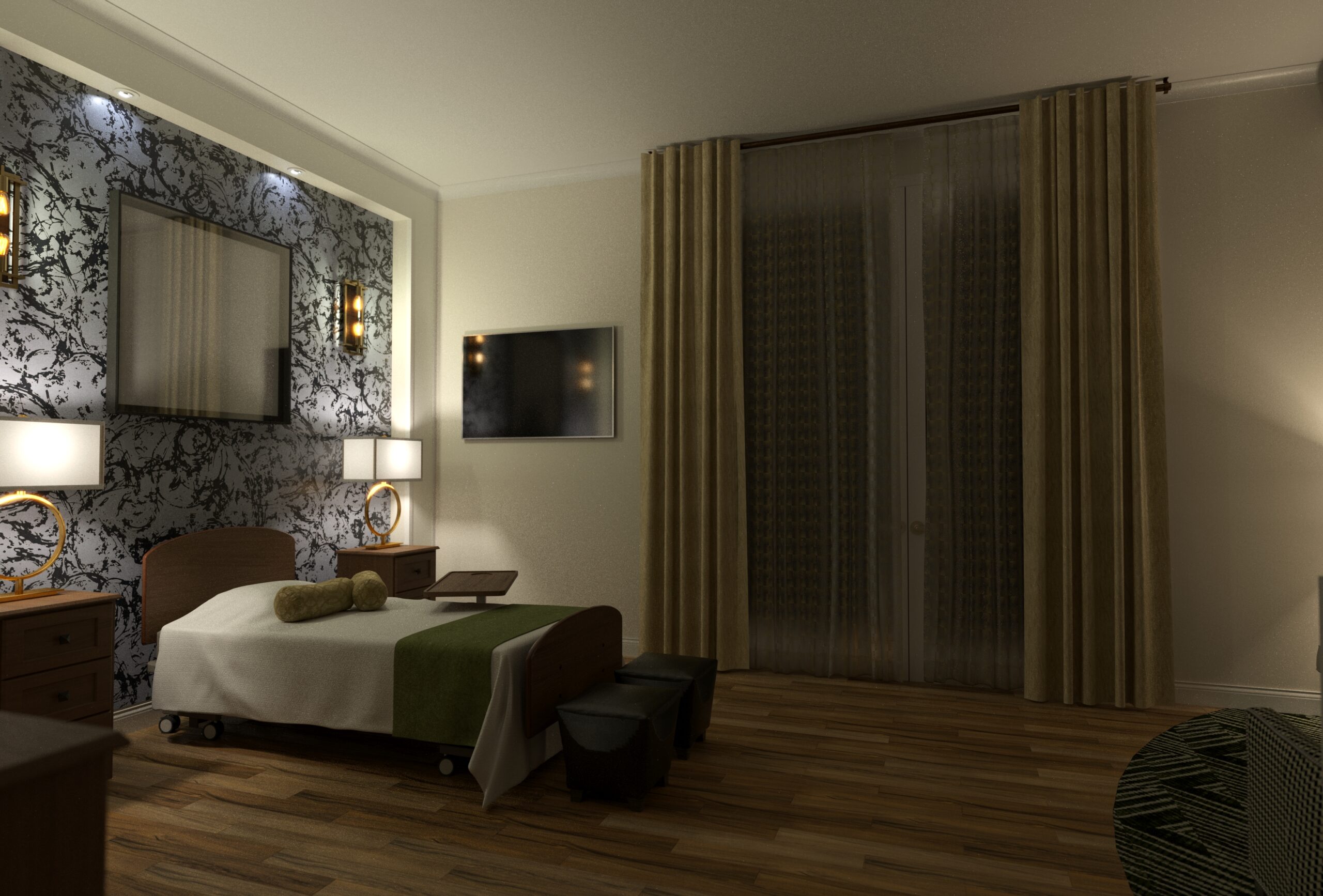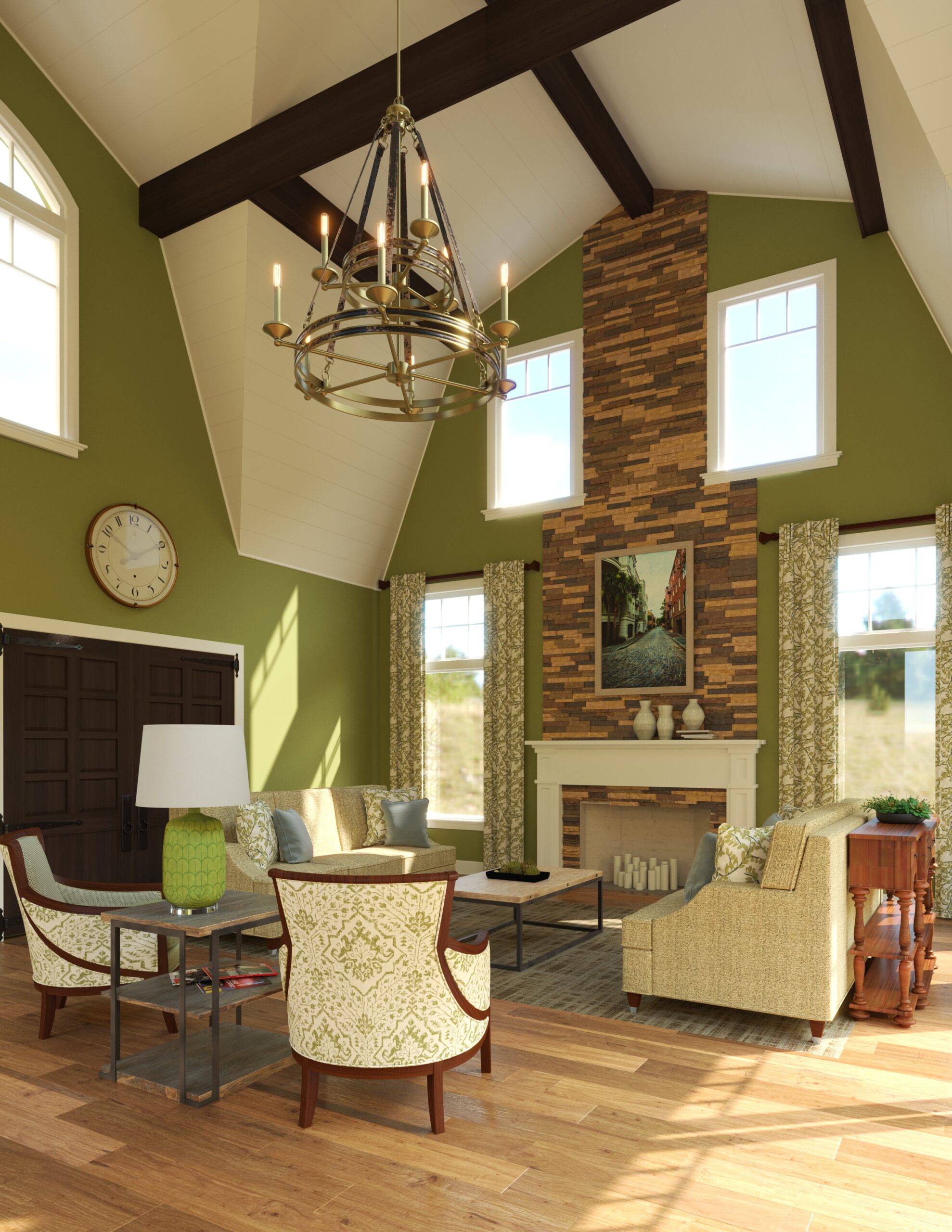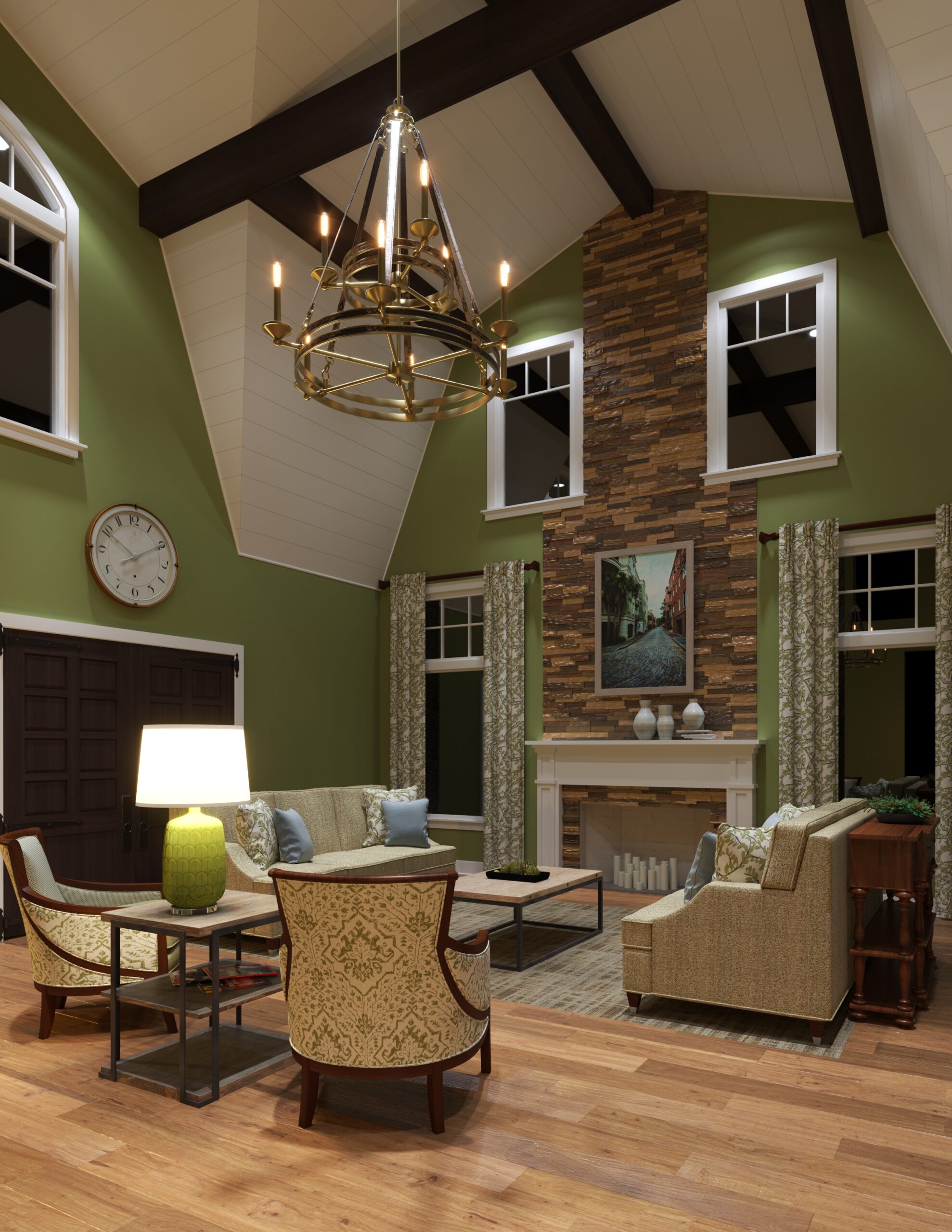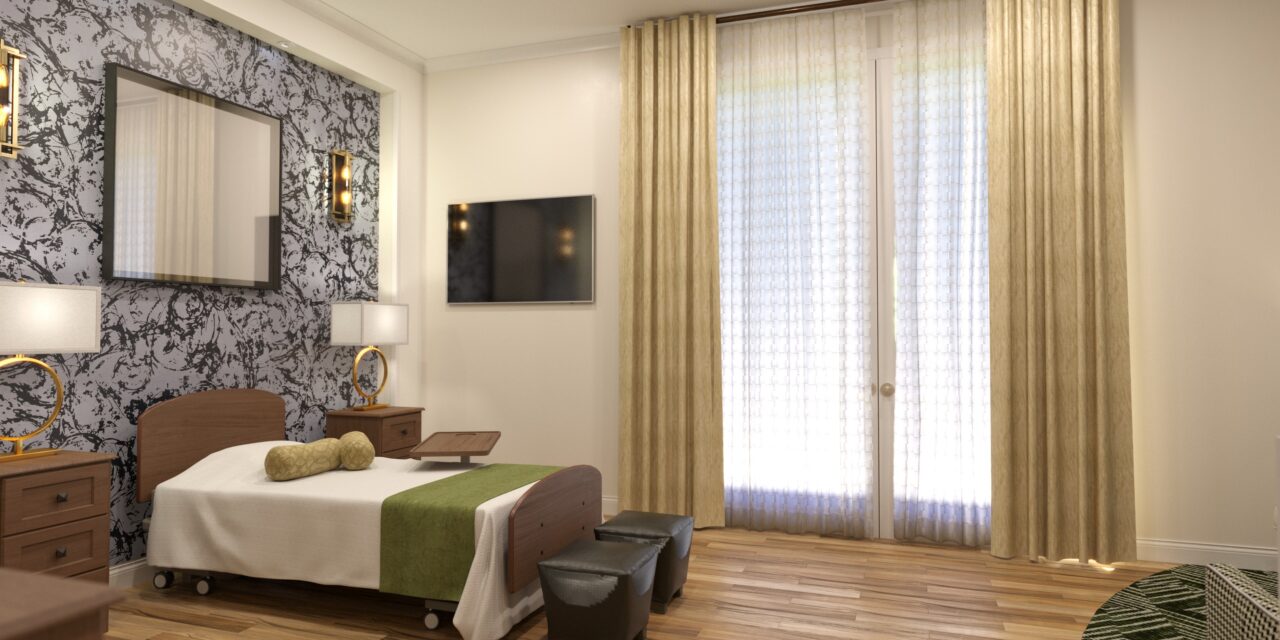Light Throughout the Day and it’s Effect on Seniors
Color alone is influential, but you must also consider the lighting in your community. More than color, lighting has a direct influence on the health of seniors. What does that mean for Senior Living communities? To put it simply, residents need more than an over-bed light and a window.
When we think back to the very beginning of the COVID-19 pandemic, we remember the harsh reality of the Senior Living industry – in many ways that reality is still true. But, changes have been implemented to reduce the harmful impact isolation had on seniors. The required extended isolation periods negatively affected seniors’ mental and physical health. Since then, communities have put safety measures in place to ensure they never have to go back to full isolation. The lighting used in resident rooms and throughout the entire community should also be reconsidered because of the negative impact seen on residents’ circadian rhythm when they were required to stay isolated in their rooms.
The Negative Effects of a Disrupted Circadian Rhythm for Seniors
Our circadian rhythm is the functions our bodies conduct every 24-hours; essentially, it’s our sleep and awake patterns. The word ‘circadian’ is a combination of the Latin word ‘circa’ meaning ‘around’ and ‘diēm’ meaning ‘day’ – the rhythm of our bodies throughout a day.1 The circadian rhythm is why you feel hungry at the same time every day and tired around the same time every night.
The color and intensity of the lighting in an environment affects our circadian rhythm in a big way. If we do not experience the proper lighting throughout the day, we have visual discomfort, reduced melatonin secretion and trouble sleeping at night. A disrupted circadian rhythm impacts overall health, especially for older adults.
One of the most pressing issues for seniors experiencing a disruption in their circadian rhythms is the negative impacts on their gastrointestinal functions. The GI tract operates differently during the day when food is consumed than it does at nighttime when one is asleep. Changes in eating and sleep patterns or in the external environment create a disconnect between the person and their habitat called circadian misalignment.
This misalignment means changes occur in the molecular circadian clock which can affect protein and carbohydrate digestion that leads to insulin resistance. An interrupted circadian rhythm reduces lipid and electrolyte absorption, and negatively impacts the function of the intestinal barrier. Most concerning for aging adults, disrupted circadian rhythms reduce the stability of the immune system. To ensure healthy circadian hygiene, residents must have access to regular sleep and awake cycles and consistent eating times.2
Jeanna Swiatkowski
Manager, Design
“We all feel better when the sun is out and the sky is clear. Seniors and staff in your buildings are no different. In fact, there is science to back up the fact that proper lighting can improve our mood and our health. Take advantage of the low-hanging fruit – optimize the lighting in your Senior Living spaces to offer those who work and live in your community the benefits of proper day-to-night lighting. It’s as easy as installing the right type of lighting in the right places.”
Misaligned Circadian Rhythms in Senior Living Staff
The clinical and nursing staff in a community are also at high risk of experiencing disrupted circadian rhythms and therefore are likely to encounter lack of focus, delayed reaction times and overall lower performance. According to experts in digestive diseases and nutrition, in the “United States of America and Europe, approximately 15–20% of the workers have non-standard work hours (e.g., permanent night shifts or rotating shifts) and most, if not all, of these workers suffer from circadian misalignment” (Voigt, Forsyth, & Keshavarzian, 2019). This does not exclude Senior Living staff that work both day and night shifts.
The Washington Post reported that as of January 2022, nursing homes and long-term care facilities have lost more than 420,000 employees. This is 12% of the total industry workforce.3 This labor shortage, being called The Great Resignation, means Senior Living staff are required to work longer shifts and cover tasks they might not be typically required to do. This puts all of Senior Living staff, night and day shift workers, at risk for circadian misalignment.
The pressure on staff lends to the urgency for Senior Living communities to do all they can to support healthy work environments. We know that light exposure at night (including the use of electronic devices or light pollution), and eating late at night or eating at irregular times disrupts the central and/or peripheral circadian rhythms.2 Both patterns are important to optimize biological functions, leading to healthier more stable and reliable staff.
Staff’s bodies, just like residents, need to be able to depend on regular and predictable changes in their work environment, including proper eating and sleeping patterns. Proper lighting throughout a Senior Living community is just one way to encourage staff to keep these patterns regulated.

The Solution to Maintaining Proper Circadian Rhythms in Senior Living
One way to ensure sleeping and eating patterns stay regular is to mimic the natural lighting of the day, like bright light in the morning and softer light in the evening, inside a Senior Living community with the proper usage of static light and dynamic light. The right lighting at the right time resets the circadian rhythm and promotes regulated eating and sleeping patterns, boosts immune systems and improves mental health.
The right lighting in every room of a Senior Living community, starting with resident rooms, can help improve the safety, health and well-being of residents and staff. Lighting is heavily overlooked industry-wide. For most communities, lighting is an afterthought – considered only as a necessity to see properly. However, deprivation of the right kind of light during the day and exposure to the wrong kind of light at night has serious impact.
Long periods of time spent indoors under the wrong kind of lighting disrupts the circadian rhythm of residents and their caregivers, negatively influencing their appetite, energy and sleep. As suggested, this results in poor GI health as well as chronic fatigue, increased agitation, depressed mood and even increased risk of falls and injuries for residents.
Throughout the community, traditional lighting, like fluorescent and LED lighting, does not give enough healthy light to supplement daylight, and it gives too much blue content when the sun goes down. In a resident room, an over-bed light does not only fail to offer the same benefits to the circadian rhythm as natural daylight, but it is often the wrong place for a light source. An over-bed light does not offer clinical staff the proper light needed to see a resident’s feet or legs, for example. An over-bed light may allow residents to read at night before falling asleep, but the direct light from overhead causes disruption in the circadian rhythm if it’s not the type of light directly leading to sleeplessness.
Lighting technology like color tuning and circadian lighting are available to meet the physiological and biological needs our bodies have for lighting. Color tuning is a way to control the color of light in a space. A resident or staff can “tune” the lighting manually from cool light to warm light in an effort to mimic the patterns of natural lighting. This technology also features intensity customization to further replicate natural lighting. For example, natural lighting at 6:00 am and 6:00 pm are both warm, but with different intensities. This dynamic lighting option offers the same ambiance in a space as natural lighting would.
Circadian lighting systems sends signals to the brain that let our bodies know whether it is night or day, leading to regulated sleeping and eating patterns. Proper circadian lighting systems include the necessary wavelength intervals to effectively regulate circadian rhythms. These systems provide clear daytime light signals that tell residents it is daytime, motivating them to perform daytime tasks. At night, these systems reduce the type of lighting that triggers the daytime light signal and increase the type of light that produces melatonin, helping residents wind down and motivating them to perform nighttime routines.
These systems help achieve the benefits of improved mood, sleep and overall heightened well-being for residents and staff. Circadian lighting can lead to a reduction in the chronic health conditions, like GI issues, that are commonly seen when residents spend all or most of their time indoors.
It’s necessary that the lighting in resident rooms meets the biological needs of residents from morning to night. One light fixture in a room cannot meet all of these needs. Consider creative was to achieve brighter days and darker nights with multiple light fixtures, various hues of lighting, placement of light sources, high-tech lighting systems and residents’ position to windows.


Proper Lighting for Safety in Senior Living
Lumens is a unit of measurement used to determine the amount of light from a light source that is visible to the human eye. As eyes age, they experience lumens differently. Proper lighting is important for circadian rhythm leading to improved health, and proper lighting increases safety.
Ensure resident rooms are equipped with the correct amount of lumens in the right places. Under-bed lighting is helpful for seniors getting up in the middle of the night. (Seniors who are experiencing disrupted circadian rhythms and cannot sleep, are prone to wander. Therefore, are at a higher risk for falls.) Think of the path to the restroom or any other destinations residents may walk to at night. Appropriately layer and plan the lighting design and offer enough lumens to get there and back to bed safely.
The Bottom Line: Lighting Throughout the Day in Senior Living
We all know the feeling of increased joy when the weather is nice, and we can soak up the sunshine. Seniors greatly benefit from time spent outdoors. (Explore senior appropriate outdoor furniture.)
However, we also know there are numerous reasons seniors may have limited access to the outdoors. There are still ways to achieve the benefits of natural lighting while indoors. Rely on our interior design experts to help you bake lighting design into your planning to ensure your spaces are supporting your residents’ and staffs’ needs. Contact us by filling out the form below!
Not ready to start your Senior Living project just yet?
Top trends for Senior Living design.
Connect with our team
1 What is circadian lighting and how does it work? BIOS Lighting. (2022, March 30). https://bioslighting.com/what-is-circadian-lighting-and-how-does-it-work/architectural-lighting/#:~:text=Circadian%20lighting%20refers%20to%20lighting,various%20times%20of%20the%20day
2 Voigt, R., Forsyth, C., & Keshavarzian, A. (2019, May). Circadian rhythms: A regulator of gastrointestinal health and dysfunction.
https://www.ncbi.nlm.nih.gov/pmc/articles/PMC6533073/
3 Bernstein, L.; Van Dam, A. (2022, January 7). Nursing Home staff shortages are worsening problems at overwhelmed hospitals. The Washington Post. https://www.washingtonpost.com/health/2021/12/28/nursing-home-hospital-staff-shortages/

